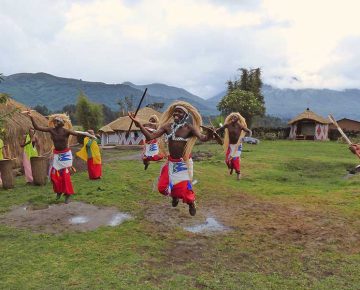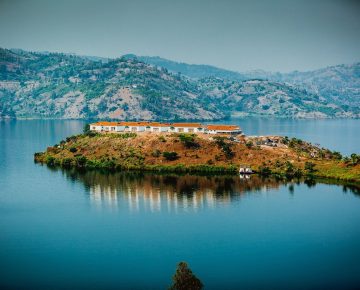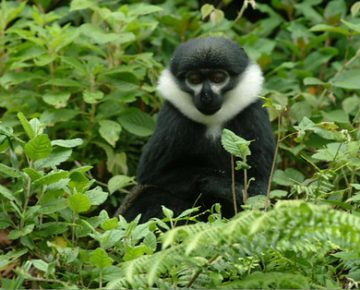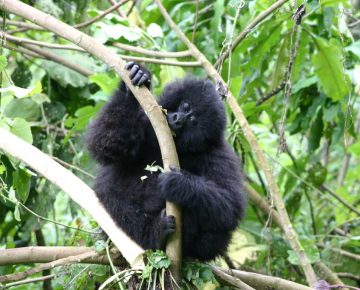Gishwati Mukura National Park
Gishwati Mukura National Park is the youngest national park in Rwanda. The park was gazetted in 2019 as a national park. It is the fourth national park in Rwanda that boosts tourism after the volcanoes, Akagera, and Nyungwe National Park. This park was originally a forest reserve in the 1970s. The forest covered 80% of the area. But during the 1994 Rwanda genocide, the refugees had shifted to this area, where they were hiding away from their enemies. Later, they had to cut down the forests in the area to create land for settlement. A significant part of the park was destroyed, including wildlife and forests.
History of the Park
In 2001, only 15000 acres of forest cover remained, with less wildlife out of over 250000 acres of the reserve. The Gishwati area conservation program was introduced in 2007 with an agreement with the government of Rwanda and the Great Ape Trust. The program was aimed at protecting the rich biodiversity in the area. The reserve was later under the management of a nongovernmental organization called the Association Hope in 2011, and is up to date. The organization is still restoring nature in the reserve, and it is now at 67%.
Gishwati Mukura National Park comprises two forests, including the Gishwati and Mukura Forest reserves. In 2015, the government aimed to plant more tree species in the forest to stabilize the challenges that they are facing, soil infertility, and regulate the water flow on the slopes of the hill. The Gishwati forest reserve used to extend into the areas of Lake Kivu towards the tropical forests of the Democratic Republic of Congo. Now the park is the smallest in Rwanda, covering an area of 34 square kilometers and located at the edge of the Nile basin. The park is home to over 395 bird species, 60 tree species, and many mammal species.
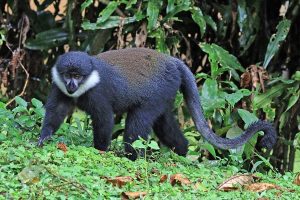
What can you do in the Gishwati Mukura National Park? Prepare to be amazed by the unique experiences this park offers.
While on your Rwanda safari, there is a variety of activities to do, which include;
Birding
Since the park is small, birding is more productive. The park is home to over 395 bird species, with 20 endemic species in the area, making it a birding paradise for birding trips. Travelers on their Rwanda safari will see birds like the mountain yellow weaver, red-throated Alethe, Dusky Crimson-wing, Rwenzori Batis, Ragel sunbird, and many others. This makes the smallest park in Rwanda a birding haven for travelers on their Rwanda safari.
Chimpanzee trekking
During your Rwanda safari, a traveler has the opportunity to walk into the Chimpanzee world. Chimpanzees are considered the closest cousins to human beings, sharing over 98% of our DNA. So, the travelers on their Rwanda safari will have to track the chimpanzees in their natural habitats. While you track the chimpanzees, you will have the opportunity to learn about their feeding mode, how they live, and how they care for their young ones. During the activity, you will have an experienced ranger. They will guide you on this activity. Also, in Rwanda, this chimpanzee trekking can be done in the Nyungwe Forest National Park.
Golden monkey trekking
The golden monkeys are one of the fascinating primates in Rwanda’s smallest park. This activity will involve walking on foot within the forests of the park. These old monkeys are golden orange, which is where the name originates. They usually live in the Bamboo type of forest within the park. As you are going to track the golden monkeys, you must have a ranger. He will interpret their behavior for you. Then you will have one hour observing them in their natural habitat.
Waterfalls hike
This is one of the rewarding activities in the park which is usually done by healthy and fit travelers on their Rwanda safari. During this hike, you will have a goal to reach the final point of the Kazenenza Falls. This is one of the most thrilling adventures in the park for travelers on their Rwanda safari. During the hike, you will also spot the plant species that are only found in this park.
Accommodation facilities in the park
The comfort of the travelers on their Rwanda safari in the accommodation facilities offers the best experience for them to enjoy the activities. In Gishwati Mukura National Park, there are limited accommodation facilities since the park is still new. The travelers on their Rwanda safari are usually advised to use the accommodation facilities in the Nyungwe Forest National Park since the park is near Gishwati Mukura National Park. The accommodation facilities are generally categorized as luxury, mid-range, and budget.
Luxury accommodation facilities offer high-end and first-class services to travelers on their Rwanda safari. These facilities are desirable for travelers. The facilities include: Gishwati Lodge, the only lodge in the Gishwati Mukura National Park, which is so luxurious. The other luxury facilities are found in the Nyungwe Forest National Park. Midrange accommodation facilities offer usual services, slightly less than the luxury services, for travelers on their Rwanda safaris. These facilities are in the Nyungwe Forest National Park near the Gishwati National Park. They include: Nyungwe Top View Lodge, Golden Monkey Hotels, Peace Guest Hotel, and many others. Budget accommodation facilities are facilities that offer standard services, and these facilities are for travelers on a tight budget on their Rwanda safaris. They include: the Uwinka campsite, the Gisakura family hostel, and many others.
What is the best time to visit Gishwati Mukura National Park?
Gishwati Mukura National Park is open throughout the year for travelers on the Rwanda safari. Rwanda has two seasons: wet and dry. The best time to visit the park is usually in the dry season, which runs from June to September and December to February. Activities like chimpanzee trekking, golden monkey trekking, and hiking are easier during this period. This is because the area is dry for them, and the vegetation is dry for tracking these animals.
On the other hand, during the year’s wet season, the area is so moist and slippery that some activities like hiking become difficult. And the most fantastic thing is that the chimpanzees come closer to the lower regions during the wet season. They come closer since there is more food, and the vegetation is so thick that it supports the chimpanzees’ life. Additionally, the wet season comes with a reduction in the number of people visiting the park per day. This implies that the experience can be easily personalized. Additionally, accommodation is cheaper in low seasons, making it the best time to visit the park, especially for budget travelers.
How do you think you could access the Gishwati Mukura National Park?
The park is mainly accessed by a road where a traveler is on a Rwanda safari from the Kigali International Airport to the park. Accessing the park will take about 3 to 4 hours since Rwanda’s speed limit is 60 km per hour. There are no domestic flights currently moving to the reserve.
In conclusion, you are almost there now that you know about Gishwati Mukura National Park. Book your Rwanda Safari and create a signature of memories.


